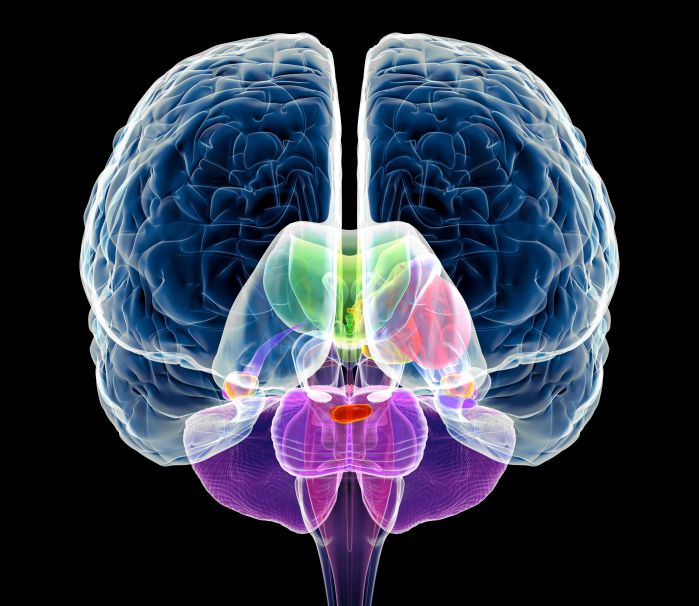How the Brain Responds to Methamphetamine
[MUSIC PLAYING]
NARRATOR: Deep within the brain is a set of structures called the "limbic system." The limbic system contains the brain's reward circuit or pathway. The reward circuit links together a number of brain structures that control and regulate our ability to feel pleasure. Feeling pleasure motivates us to repeat behaviors.
When the reward circuit is activated, each individual cell in the circuit relays electrical and chemical signals. The small gap between the sending and receiving cells is called the "synapse." In the reward circuit, dopamine neurons release the neurotransmitter dopamine. The released dopamine molecules travel across a synapse and link up with proteins called "dopamine receptors" on the surface of the receiving cell.
When dopamine binds to the exterior of the dopamine receptor, this causes proteins attached to the interior part of receptors to carry the signal onward within the cell. Some dopamine molecules re-enter the sending cell via dopamine transporters and can be re-released.
When a reward is encountered, the presynaptic cell releases a larger amount of dopamine in a sudden burst. Dopamine transporters will then quickly remove the excess.
Dopamine surges in response to natural rewards and help the brain learn and adapt to a complex world. However, drugs are able to hijack this process, contributing to unhealthy behaviors and consequences.
When someone first uses methamphetamine, the drug quickly enters the brain. At low doses, meth blocks the reentry of dopamine into the presynaptic cell, just like cocaine does. But unlike cocaine, higher doses of meth can increase the release of dopamine from the cell, leading to much, much more dopamine in the synapse, where it becomes trapped since meth prevents the transporters from removing it.
Because so much dopamine remains in the synapse for such long periods of time, the postsynaptic cell is activated to dangerously high levels, causing the user to experience powerful feelings of euphoria, making meth incredibly addictive.
[MUSIC PLAYING]

